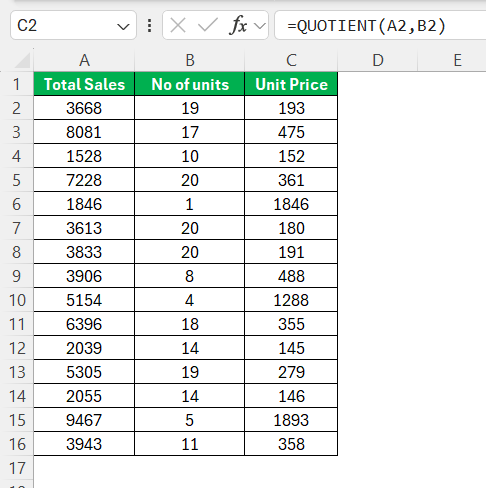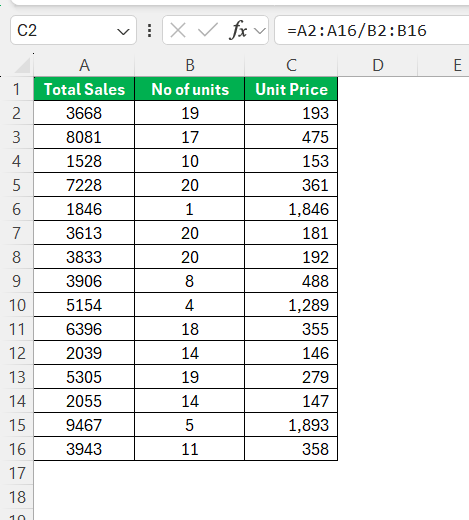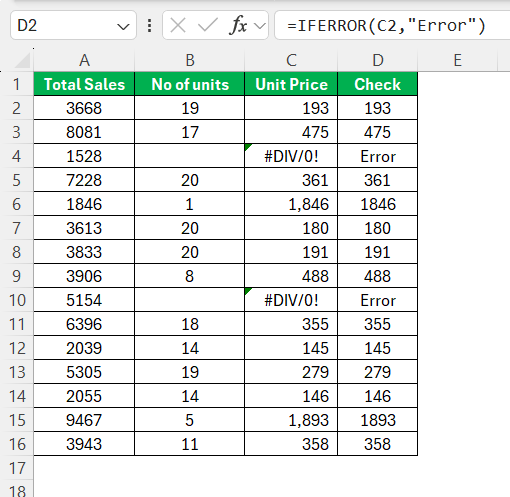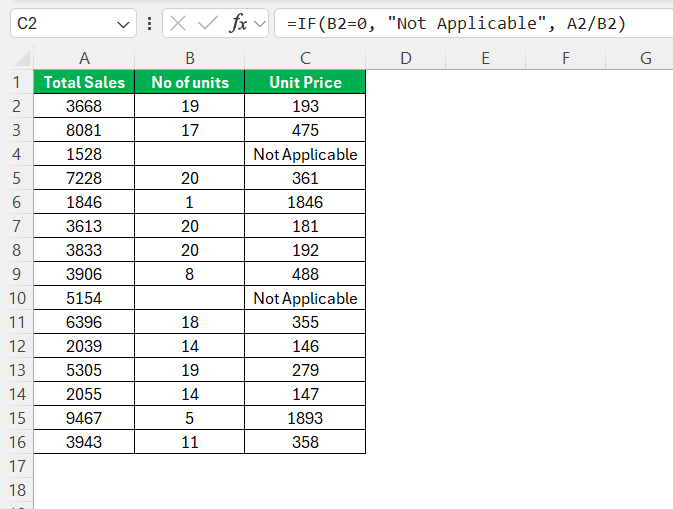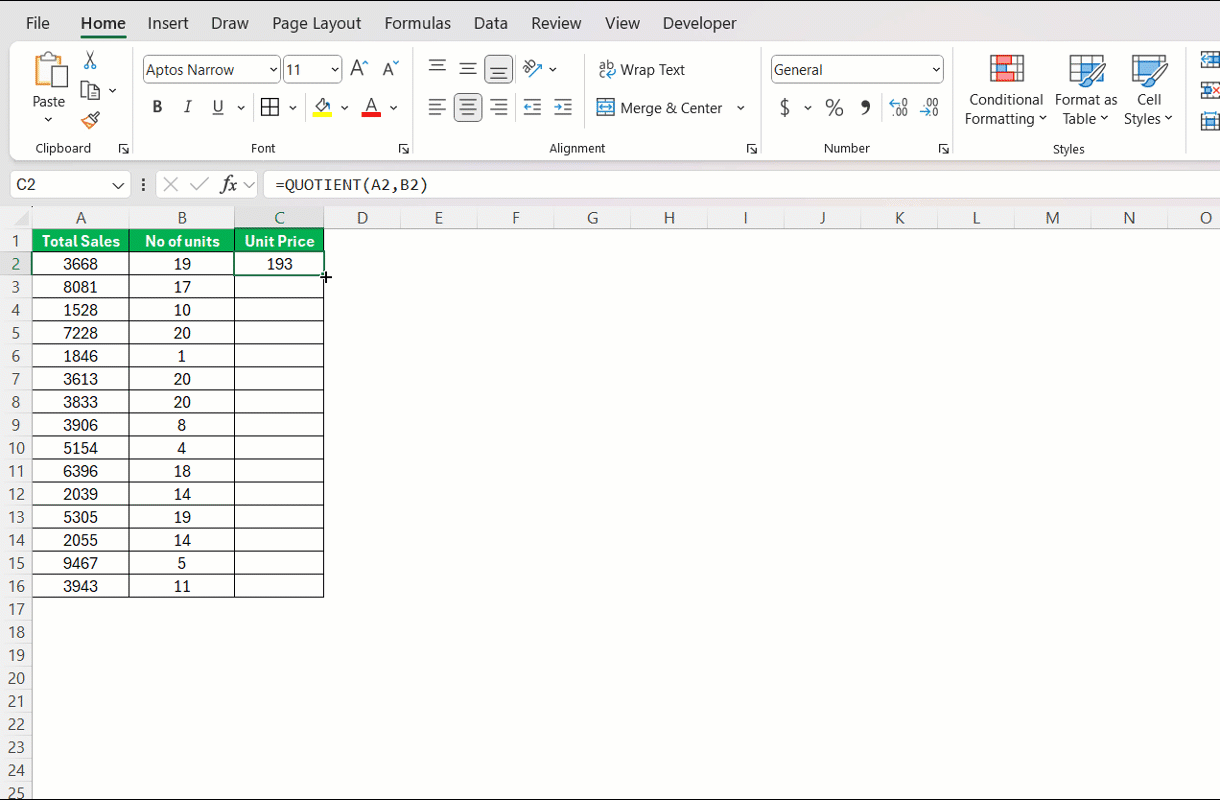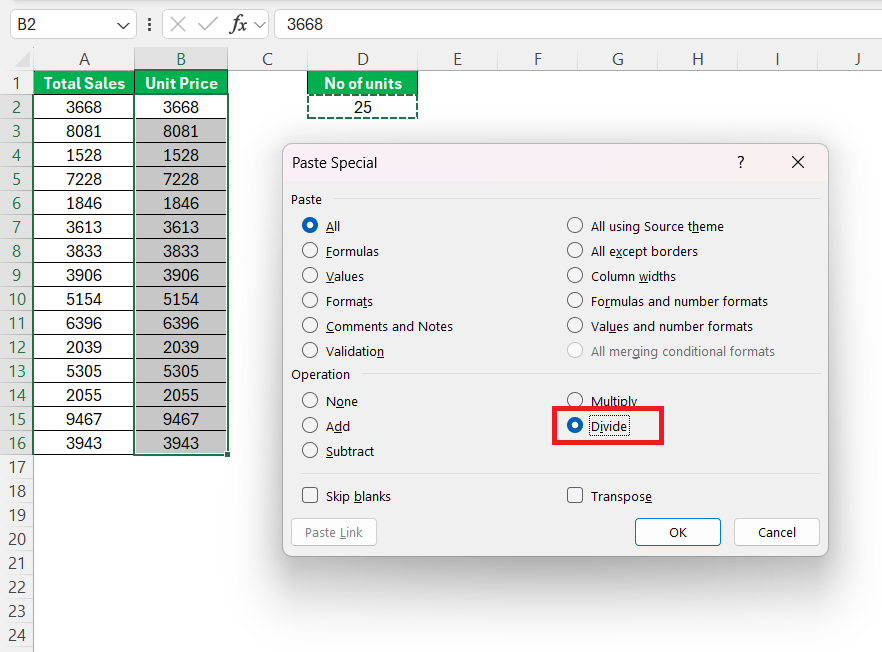Dividing two columns in Excel is a simple yet powerful technique that I often use to analyze data more effectively. Whether I’m working with financial data, tracking performance metrics, or comparing two sets of numbers, this method allows me to quickly obtain the ratio or percentage difference between two values. In this article, I’ll walk you through the steps to divide 2 columns in Excel, making it easy to apply this useful skill to your own projects.
Key Takeaways:
- Dividing columns in Excel is essential for comparing data and calculating ratios.
- Avoid common pitfalls like the #DIV/0! error by handling zero values carefully.
- Use the QUOTIENT function for integer-based divisions when decimals aren’t needed.
- Array formulas can divide multiple cell ranges simultaneously, boosting efficiency.
- Automate repetitive division tasks with the fill handle and Paste Special feature.
Table of Contents
Excel Calculations Unveiled
The Necessity of Dividing Columns
Dividing columns in Excel plays a vital role, especially when comparing sets of data or calculating ratios and averages. As we frequently stumble upon scenarios where division is necessary — such as finding the average hours worked per day or determining unit costs — knowing how to carry out this operation effectively becomes imperative.
Proficiency in this process enables us to handle large datasets and draw meaningful insights with precision.
Common Pitfalls When Dividing in Excel
When diving into column division in Excel, several common pitfalls can snare the unwary user. A notable error is the dreaded #DIV/0!, which rears its head when attempting to divide by zero – a mathematical impossibility that Excel won’t let you sweep under the rug.
Others include mismatched cell formats, which can yield bizarre results or simply fail to perform the division altogether. Incorrectly selecting cell ranges can also skew your calculations immensely. The key to avoiding these pitfalls lies in meticulous cell selection and an understanding of error handling.
Step-by-Step: How to Divide 2 Columns
Using the Quotient Function like a Pro
Unlocking the power of the QUOTIENT function in Excel is a game-changer for producing whole number divisions. Imagine you’re computing an inventory breakdown or splitting a group into teams — decimals won’t do. That’s where QUOTIENT steps neatly in.
Remember a few golden rules: Always ensure your inputs are numeral, be on your guard against dividing by zero, and bear in mind QUOTIENT’s exclusive output of integers. For instance, =QUOTIENT(A2, B2) will chop off any fractions and give you a clean, whole number.
It delivers the functionality you need for structured, integer-based analytics.
Ensuring Accurate Division with Array Formulas
Array formulas in Excel are the mark of the seasoned analyst, especially when it comes to division across multiple cells. Conceptually, array formulas might seem complex, but they’re incredibly efficient, and with a little practice, we can utilize them with confidence.
For accurate column division, array formulas take the stage for their capacity to process several values at once within a range. Let’s say we need to divide data in cells A2:A16 by corresponding entries in B2:B16. By selecting the entire target range (C2:C16), typing =A2:A16/B2:B16 into the formula bar, and pressing Ctrl + Shift + Enter, we’ve just performed multiple divisions simultaneously.
And there’s an added bonus — this method protects our formula from accidental alterations, as Excel treats it as a single unit that spans multiple cells.
Array formulas are a boon when our goal is fostering data integrity and efficiency in handling bulk operations.
Fine-Tuning Your Results
Sidestepping the Dreaded #DIV/0 Error
Sidestepping the feared #DIV/0! error, which flags a division-by-zero occurrence, demands a proactive approach in Excel. The IFERROR function is crucial in our error-avoiding strategy, as it allows us to define an alternative output when an error is detected. For instance, =IFERROR(A2/B2, "Error") neatly replaces errors with an empty cell, keeping our dataset clean and presentation-ready.
For cases where we prefer to differentiate between diverse types of errors, a tailored IF statement, such as =IF(B2=0, "Not Applicable", A2/B2), can be invaluable. This permits a customized response – it clearly communicates the nature of the problem without obstructing further analysis.
By incorporating these techniques, we ensure our worksheets remain both aesthetically and functionally impeccable, even when the data isn’t ideal.
Tips to Enhance Your Excel Productivity
Automating Division Across Multiple Cells
To boost productivity in Excel, we can’t overlook the significance of automating tedious tasks such as dividing multiple cells. For automation, consider the fill handle — a dependable and swift method to apply a division formula throughout a column or row. After dividing the first pair of cells with a formula like =A2/B2, drag the fill handle down to copy this formula, and Excel intuitively adjusts the cell references to suit each row.
Utilizing Paste Special for Efficient Calculations
Another lifesaver is Excel’s “Paste Special” feature. With a number to divide by in your clipboard, selecting the range to modify and invoking “Paste Special” can transform myriad numbers in one fell swoop, choosing “Divide” to apply your division broadly and instantaneously.
Automation like this doesn’t just save time — it minimizes human error, ensuring a consistent and reliable dataset.
FAQ: Hone Your Excel Division Skills
Can You Explain Quotient Function Use Cases?
Certainly! The QUOTIENT function comes in handy when you need to determine how many times a number can be divided by another without considering the remainder. It’s quite useful in situations where I require whole numbers. For instance, if I’m dividing a set of items into equally sized groups, QUOTIENT helps by telling me how many full groups I can create. Another real-world scenario could be calculating the number of complete boxes that can be packed when shipping goods; QUOTIENT would give me the number of boxes without fractional parts, ensuring I work with whole units only.
How Do You Handle Zero Values to Prevent Errors?
To expertly thwart errors from zero values in Excel, I wield formulas like =IF(B2=0,"Error",A2/B2) or =IFERROR(A2/B2,"Error"). The first checks whether the divisor is zero before carrying out the division, while the second catches any errors resulting from the division, including a #DIV/0!, and then returns “Error” or another specified message. Utilizing these formulas ensures that I maintain clean data and clear communication regarding potential errors within my spreadsheets.
How do I divide two columns in an Excel sheet?
To divide two columns in Excel, simply input =A2/B2 in the cell where you want the answer to appear, where A2 and B2 are cells you’re dividing. Hit Enter and drag the fill handle down to apply this to additional rows. Excel will calculate and display the result for each cell. Make sure both columns have numerical values and watch out for division by zero, adjusting your formula as necessary to avoid errors.
How to divide by 2 in Excel?
To divide a value by 2 in Excel, you can enter a simple formula in a cell where you want to display the result. For instance, to divide the value in cell A1 by 2, you would input the formula `=A1/2` in the destination cell. Press “Enter” after typing the formula, and the result of the division will be calculated and displayed in that cell.
What is the division symbol in Excel?
The division symbol in Excel is represented by a forward slash (“/”). It is a key operator used within formulas to carry out mathematical division, where one number, the dividend, is divided by another, the divisor.
John Michaloudis is a former accountant and finance analyst at General Electric, a Microsoft MVP since 2020, an Amazon #1 bestselling author of 4 Microsoft Excel books and teacher of Microsoft Excel & Office over at his flagship MyExcelOnline Academy Online Course.

